The First Cat War
A hundred years ago, conservationists first identified cats as a serious threat to birds. We’re still dealing with the same challenge today.
In 1916, a serious debate about cats was consuming the country’s attention. Conservationists blamed cats for being the greatest threat to the country’s bird life, while cat-lovers accused bird-lovers of hysteria. The conflict was often reduced to zero-sum terms, with the naturalist John Burroughs declaring that “the preservation of birds involves the nonpreservation of cats.”1 Even casually, people had to pick a side. Carl Van Vechten quipped that “One is permitted to assume an attitude of placid indifference in the matter of elephants, cockatoos, H. G. Wells, Sweden, roast beef, Puccini, and even Mormonism, but in the matter of cats it seems necessary to take a firm stand.”2
When he surveyed the matter, Edward Howe Forbush recognized that it had “reached an acute stage.” After seeing that “recently published assertions for and against the cat, freely bandied about, have absolutely no foundation in fact,” he set out to correct the record by writing a comprehensive and extensively researched report on the “value or inutility of the domestic cat.”3
Forbush, the State Ornithologist of Massachusetts, began his 1916 report by presenting the contradictions in a cat’s nature that made the debate so heated. “The cat, of all animals, is in some respects the most intimate companion of man … its independent character and its graceful, quiet movements appeal particularly to women,” while “the delightful, playful activity of its young make it a welcome fireside companion throughout the civilized world … Nevertheless, it leads a dual existence.” At night, the cat becomes “a wild animal, pursuing, striking down and torturing its prey … Now it ravages the dovecote; now it steals on the mother bird asleep on her nest, striking bird, nest and young to the ground. In the darkness of night it turns poacher. No animal that it can reach and master is safe from its ravenous clutches.”4
Unsurprisingly, Forbush came down on the side of the birds. In this, he found agreement with most other conservationists. “The most important problem confronting bird protectors to-day is the devising of a proper means for the disposition of the surplus cat population of this country,” said the pioneering ornithologist Frank Chapman.5 One writer placed cats first among the threats to songbirds, followed by “small boys, English Sparrows, Italian laborers, and Starlings.”6 Another wrote that “we have been told to weariness of the ravages of the small boy with a gun and the woman with feather dressed hat; but as a destroyer of song birds the cats make away with more birds in a year than the small boys in a century; and kill more small birds than all the millinery hunters in the country.”7
The Worst Enemy of Birds
Through at least the 1930s, there was no such thing as an indoor cat. Most cats were considered working animals, and were expected to rid houses and barns of mice and rats. But by the end of the 19th century, they began taking on other roles, especially that of animal companion. Yet even when they were the object of a great deal of affection — what we’d think of as pets today — they were still seen as part wild, and most could still come and go as they pleased. In his 1916 survey, Forbush found that “about ninety per cent of the cats are allowed to roam at night.”
A 1923 edition of Lippincott’s Silent Reader, intended for second grade students, explained why these outdoor cats were so harmful to bird populations: “Cats are the worst enemy of birds. The greatest harm is done during the nesting season. The young birds cannot protect themselves against the cat. The nests on the ground can easily be found, or the cat can climb the trees. Even after the young leave the nest the cat can catch them while they are learning to fly.”8 Young birds were easy targets for cats, and they were extremely efficient at cleaning out nests. One of Forbush’s correspondents reported that “during the past five years in our yard in the city the robins have never succeeded in raising a brood of young ones which escaped the fate of being mauled to death by cats.”

And cats weren’t just a problem in towns. City-dwellers often got “rid of surplus cats by carrying them, in bag, basket or box, outside the towns,” which resulted in “stocking practically every piece of woodland with these arch-enemies of bird-life.”9 And “heartless ‘summer cottagers’” were accused of taking cats along on their beach vacations and abandoning them on their return home, leaving “thousands of deserted cats wandering along the beaches and dunes of our coast.”10 These deserted cats “reverted to the wild state, bred in the woods, and the numbers of their progeny have increased until they have become such a menace to small game, insectivorous birds and poultry that some method of repressing them must be found.”11
But there was nowhere that cats did so much damage as on islands. As far back as 1916, it was recognized that “wherever cats have been introduced and allowed to multiply unchecked upon an island, they have decimated, driven out or exterminated the birds.” Over and over again, cats were introduced by fishermen and lighthouse keepers to the small, rocky islands off Maine and Massachusetts, where they wreaked havoc on seabirds, who raised their chicks in nests placed directly on the bare ground. “A great colony of petrels on [Maine’s] Great Duck Island has been decimated in recent years by a few cats kept there by the lighthouse keepers,” wrote Forbush, while on Muskeget Island, near Nantucket, a warden predicted that if “cats continued to increase they would exterminate the entire colony of some 45,000 birds within five years.”12
Enemy to Farmers
Yet the real reason bird-killing cats were considered a problem was that they threatened the income of farmers, and through them, the food supply of the country. Cats would occasionally target poultry, and “the ordinary chicken killer gets from 2 or 3 to 12 in a day,” although “usually its career is short.” Cats could also do tremendous damage at game farms, and the marauding cats were killed in response. “Such destruction of cats is a necessity,” said Edward Forbush, “otherwise practically no game can be raised.” One reader protested that Bird-Lore published a picture of five dead cats, killed at the New York State Game Farm, to which the publication retorted that she “indicates no regret over the fact that these five cats had killed and eaten $5,000 worth of young pheasants.”13
Much more seriously, cats killed the birds that ate the bugs that destroyed farmers’ crops. Charles Pease reasoned that “if crops are worth money, the birds that save them from pest destruction are worth money, and the cat takes money out of your pocket every time it catches a bird.”14 Defenders of cats naturally contended that cats save money by catching the mice and rats that eat a farmer’s grain, a value which one writer placed at nine dollars per year. But when economic ornithologists studied the matter, they found that cats did “a great deal more damage in the destruction of birds than good in the destruction of mice and rats.” Each “seed-eating bird,” they asserted, was worth a dollar per year to the farmer, and they estimated that the average cat killed fifty birds annually.15
One of Forbush’s correspondents saw this tradeoff in action. He claimed to have a productive garden until new neighbors moved in with their six cats. “Last summer, he says, half the birds were killed. This year hardly one is left, and many spring migrants have disappeared. He never knew before that there could be so many destructive insects in a square foot.” This sort of account, multiplied across every farm and garden in the country, led bird-lovers to conclude that “the destruction of insectivorous birds by cats .. has an important bearing on the welfare of the human race.”16
Politics of the Cat War
All of the animosity directed at cats by bird-lovers did not escape the attention of the cat-owning community. Cat-lovers were alarmed by conservationists who were “so rabidly hysterical on the subject of cats that they would have them all destroyed.” The cat-lovers retorted that cats were merely following their biological instincts, and that bird-lovers would change their position as soon as they saw their “pea-pods empty and the strawberry bed raped of fruit” by birds. Besides, they argued, cats had just as much to fear from birds. In 1920, the cat advocate Carl Van Vechten vividly described how a cruel eagle “swoops from the skies, seizes the cat along his spine with its terrible claws, mangles his head with its beak the while it flaps its gaunt and terrifying wings and bears the little beast aloft.”17
The complaints of cat lovers were not entirely baseless. There were conservationists, such as Eugene Davenport, who stated that “the sooner [domestic cats] could become extinct the better for our song birds on which we depend so much.”18 And many who did not call for complete extermination struck an adversarial tone. “No one has a right to keep a cat that becomes a nuisance in killing birds on his neighbor’s place,” reasoned Gilbert Trafton, “any more than he has a right to keep cows and horses and allow them to roam at will over his neighbor’s garden.”19
But a more frequent refrain from those more level-headed in the bird community was that bird-lovers and cat-lovers had common ground, that “the matter of disposing of stray cats concerns the cat-lover quite as much as the bird-lover.”20 Rather than focusing on “the question of birds’ rights vs. cats’ rights,” they preferred to “induce cat-lovers to believe that they may conscientiously join hands with bird-lovers in their efforts to prevent the undue increase of the cat population.”21
Means of Controlling the Cat
For despite the occasional bitterness of the debate, there were many in the middle who wanted to do justice to both birds and cats. As Forbush pointed out, “many cat lovers are bird lovers also, and many people who keep cats as pets wish to prevent them from killing birds.” In periodicals like Bird-Lore, in government reports, and in popular books from the era, concerned citizens discussed how they could protect birds from cats, while still treating cats in the most humane way possible.
Most of Forbush’s correspondents believed that cats couldn’t be trained to not catch birds, but those who did had a range of inventive solutions. One popular suggestion was tying bells to cat collars to warn birds of danger. But belled cats still succeeded in killing birds, as one writer found, when “his household Angora cat, though loaded with bells, brought to their veranda thirty-two birds during one nesting-season and twenty-eight birds during the next.”22

Others suggested scaring cats off with “a well-directed shot from an air gun, a large torpedo thrown and exploded close by it, a tin pan thrown so as to clatter, or a drenching from a hose.” Nests and birdhouses could be made “cat-proof” by wrapping a sheet of tin or an old stove-pipe around trees, which cats couldn’t climb over. Chickens or game birds could be protected by running “heavily charged wires” on the tops of their pens, although this was “too dangerous and expensive for general use.”
Bird-lovers spread the sensible suggestion that cat-owners keep their pets confined while birds were nesting during the spring and summer, most particularly at night. Indiana’s Fish and Game commission proclaimed, “Educate all, especially the coming generation, to appreciate the fact that it is an offense against society, human, cat and bird, to allow cats to run wild and reproduce unchecked.” If education failed, humiliation could work just as well: “Let humane societies and humane people prosecute, put to shame, frown upon and ostracize all cat-deserters.”23
But the number of cats at large seemed too great to manage with ad-hoc measures, and many bird-lovers felt that the only way to address the problem was through municipal and state law. Authors pointed out the apparent contradiction rising from laws that banned people from killing songbirds but placed no restrictions on their cats doing the same. According to Forbush, “a man is liable to a fine if he kills a bird, but he may with impunity keep any number of cats to kill birds and bring them to him, although he has no legal right to possess or use birds so caught.”24
Many conservationists advocated that “owners of cats should be required to pay an annual license, such as is now required for dogs.” Proponents of these laws reasoned that licenses would “reduce the number of cats, as people who now keep several cats would then keep but one, and some people would not keep any at all, and the cats that were kept would be better cared for.” And in all cases, these licenses should be “accompanied by some plan by means of which unlicensed stray cats would be disposed of.”25
Destroying Cats
Bird-lovers were not the first group to see large numbers of stray cats as a problem. In the years after the civil war, Societies for the Prevention of Cruelty of Animals emerged to advocate against mistreatment and abandonment of animals, including cats. These societies took upon themselves the duty to “destroy homeless, diseased and injured cats” as a humanitarian measure. “The destruction of these vagrant cats is a kindness to the cats,” explained Gilbert Trafton, “as during the colder months of the year they are not able to secure enough food and consequently live in a half-starved condition.”
By the turn of the century, humane societies were established in most large American cities. And the number of cats that they euthanized was tremendous. Boston’s Animal Rescue League destroyed 210,000 cats between 1905 and 1914, a number which New York’s American Society for the Prevention of Cruelty to Animals exceeded every year, killing 303,949 “sick, injured, and homeless cats” in 1911 alone. Animal rescue societies would place some cats in homes, but for every one that was given to a loving family, another hundred were destroyed.26
Humane societies did not round up cats out of a concern for birds, but bird-lovers frequently praised their work, which they used both as a demonstration of the scale of the cat problem and as a justification to kill cats themselves. Conservationists never killed cats at the scale of New York’s Society for the Prevention of Cruelty to Animals, but game wardens, sportsmen, and otherwise peaceable bird-lovers resolutely killed cats, sometimes by the dozen, in the defense of birds.

At game preserves and sporting clubs, wardens killed any cats curious enough to come looking for quails or pheasants. One game warden brought his hunting dog with him to trail cats “and bay until a 22-caliber rifle comes to ‘do the rest.’”27 Another warden “found that the attacks of bull-dog-bite-itis to be more certainly and rapidly fatal to predatory cats than appendicitis.”28 At the Henry Ford farms in Dearborn, Michigan, wardens killed 75 cats a year. And in New York’s Central Park, a “man employed to guard the birds” killed 161 cats in the first six months of 1910.29
Farmers shot any cats caught lurking near the hen house, and some bird-lovers would kill any stray cat found traipsing through the garden. In this they had the support of the law. While deliberate cruelty was illegal, in most states cats were not considered property, but rather “a predatory animal which any person may destroy when found doing damage on his premises.” Occasionally, repentant cat owners would even kill their own pets after learning how many birds they had destroyed. In a letter to the New York Times, one writer confessed: “On Saturday last our cat caught two young robins. Having tasted blood, she has developed the hunting instinct, and during the last week has caught and killed seven birds. Her funeral will take place Sunday afternoon.”30
Rights of People, Birds, and Cats
Looking back at this era with a hundred years of hindsight, it does not seem that much has changed. Plenty of heated language can still be found from bird-lovers and cat-lovers, but most people, it seems, continue to prefer solutions that offer “just regards for the rights of people, birds and cats.”31 Unfortunately, this sort of resolution remains just as elusive as it was back then. The number of feral cats has only grown since 1916, and all signs indicate that the number of birds they kill has increased in stride.
Estimates of the number of birds killed by cats have always been extremely speculative, and today these estimates are bigger than ever. In 1916, Gilbert Trafton claimed that 85 million birds were killed by cats every year east of the Mississippi. This figure pales in comparison to more recent approximations. A paper that appeared in Nature in 2013 put the number of birds killed by cats in North America at somewhere between 1.3 and 4.0 billion birds every year, a total that is mostly driven by unowned cats.32 If this figure were accurate — a big if — it would dwarf the toll of every other direct cause of human-driven bird mortality.
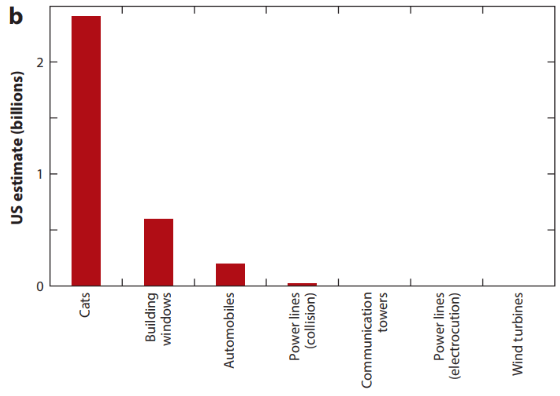
In the last hundred years, the stakes for figuring out humane and effective solutions to the bird-cat problem have only increased. The number of cats, both domestic and feral, has more than doubled since 1970. Meanwhile, the number of birds in North America has fallen by three billion over the same period, driven by many causes, of which cats are just one. All the same, Robert Ridgeway’s words from 1915 seem just as relevant today: “It is of course difficult to estimate the extent to which these practically wild cats are responsible for the present relative scarcity of birds, but it must, from the very nature of the case, be a most important factor.”33
Forbush, Edward Howe. “The Domestic Cat: Bird Killer, Mouser and Destroyer of Wild Life. Means of Utilizing and Controlling It.” Massachusetts State Board of Agriculture. Economic Biology – Bulletin No. 2. 1916.
Van Vechten, Carl. The Tiger in the House. United States: A. A. Knopf, 1920.
Forbush, 1916.
Ibid.
Trafton, Gilbert Haven. Bird Friends: A Complete Bird Book for Americans. United States: Houghton Mifflin, 1916.
Rathborne, R. C. “Starlings as a Nuisance.” Bird Lore. United States: Macmillan Company, 1915.
Forest and Stream. United States: Forest and Stream Publishing Company, vol. 67, 1906.
Hale, Ethel M.. Lippincott’s Silent Reader, Second Grade. United States: J.B. Lippincott, 1923.
Ridgway, Robert. “Bird-Life in Southern Illinois: Changes Which Have Taken Place in Half a Century..” Bird Lore. United States: Macmillan Company, 1915.
Bird-Lore. United States: National Audubon Society, 1905.
Forbush, 1916.
Ibid.
“Cats and Birds.” Bird Lore. United States: Macmillan Company, 1915.
Trafton, Gilbert Haven. Bird Friends: A Complete Bird Book for Americans. United States: Houghton Mifflin, 1916.
Henderson, Junius. The Practical Value of Birds. United States: Macmillan, 1927; “On the Cat Question.” Bird Lore. United States: Macmillan Company, 1915.
Forbush, 1916.
Van Vechten, Carl. The Tiger in the House. United States: A. A. Knopf, 1920.
Davenport, Eugene. Domesticated Animals and Plants: A Brief Treatise Upon the Origin and Development of Domesticated Races, with Special Reference to the Methods of Improvement. United States: Ginn, 1910.
Trafton, Gilbert Haven. Bird Friends: A Complete Bird Book for Americans. United States: Houghton Mifflin, 1916.
Ibid.
Bird-Lore. United States: National Audubon Society, 1905.
Trafton, Gilbert Haven. Bird Friends: A Complete Bird Book for Americans. United States: Houghton Mifflin, 1916.
Biennial Report of the Commissioner of Fisheries and Game for Indiana. United States: n.p., 1911.
Forbush, 1916.
Trafton, Gilbert Haven. Bird Friends: A Complete Bird Book for Americans. United States: Houghton Mifflin, 1916.
Forbush, 1916; Trafton, 1916.
Wright, Mabel Osgood. “The Making of Birdcraft Sanctuary.” Bird Lore. United States: Macmillan Company, 1915.
Biennial Report of the Commissioner of Fisheries and Game for Indiana. United States: n.p., 1911.
Forbush, 1916.
Ibid.
Biennial Report of the Commissioner of Fisheries and Game for Indiana. United States: n.p., 1911.
Loss, Scott R., Tom Will, and Peter P. Marra. “The impact of free-ranging domestic cats on wildlife of the United States.” Nature communications 4, no. 1 (2013): 1-8.
Ridgway, Robert. “Bird-Life in Southern Illinois: Changes Which Have Taken Place in Half a Century..” Bird Lore. United States: Macmillan Company, 1915.



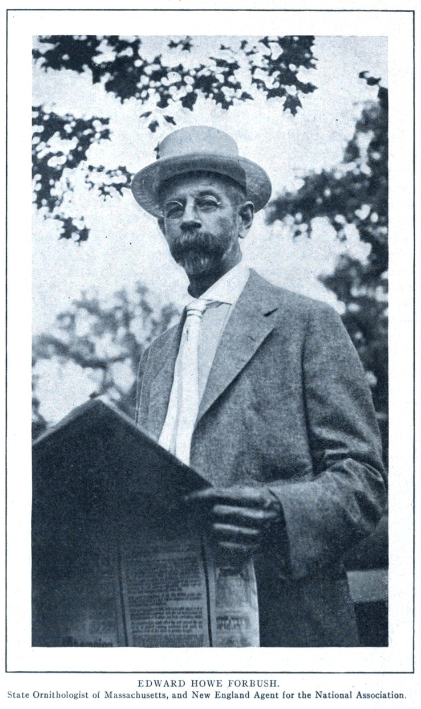




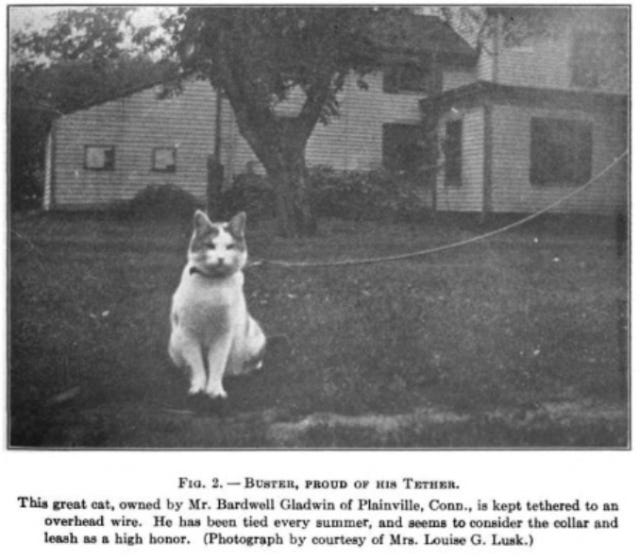
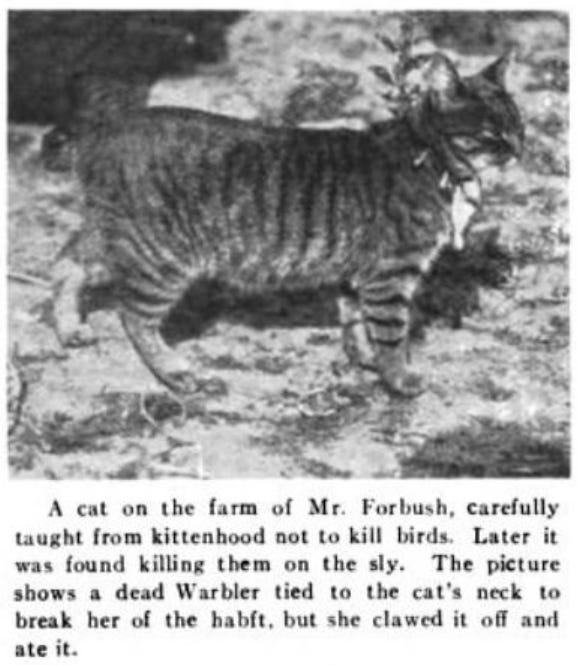

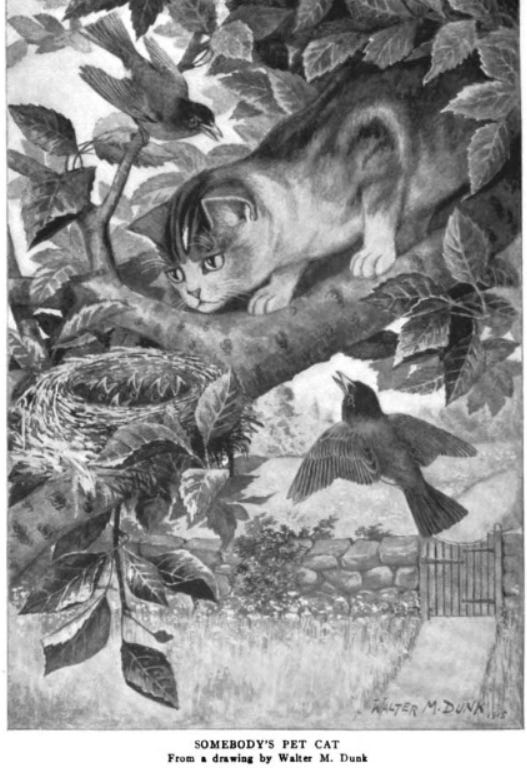

I liked this article. I feel like the cat issue is difficult because a lot of people treat cats like wild animals. They claim their animals are unhappy, so they have to be let outside. A lot of cat lovers feel strongly that cats shouldnt be inside only pets. I know in England if you adopt a cat, you have to let it go outside. So it is a very steep cultural problem.
I also live somewhere with a sizable outdoor cat population. I see the same cats everyday and even pet them sometimes! A lot of people are very comfortable with street cats, and dont mind feeding them, etc.
I think the problems surrounding cats are deeply cultural and would need to be actively addressed. People love cats so much. I feel like it shouldnt be hard to figure out solutions but nope! A hundred years later...
Today keeping your cat indoors is one of things we're told we need to do to help birds. It's on every birding or bird conservation organization's list. But I never see cat photos in those campaigns. Plenty of window-sticker photos and bird-friendly coffee photos, but not cat photos. That struck me when I was reading this and seeing all the compelling photos of cats up to no good. Has the social media viral "cat video" phenomenon made it too risky to feature a cat doing something that's not cute? I really like the last photo of the cat that has never caught a bird.